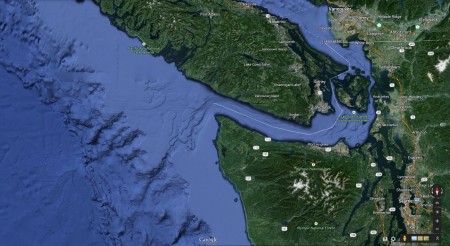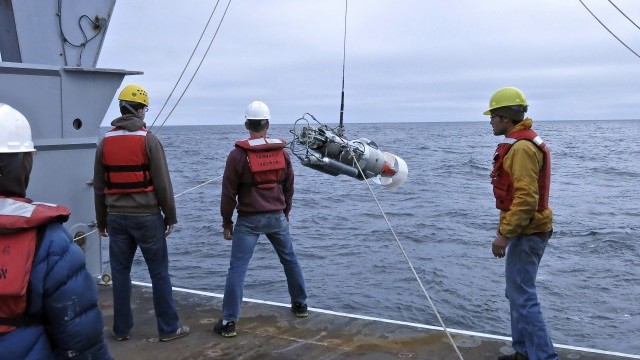Scientists may have discovered the source of the Pacific Northwest’s legendary rich waters, in a submarine canyon in the deep ocean.
University of Washington oceanographers published their findings in March: a surging flow of nutrient-rich warm water from the deep ocean canyon between the U.S. and Canada is swept into the Puget Sound at 20-30 times the rate at which river water comes into Puget Sound from the land.

"This is the headwaters of Puget Sound," said co-author Parker MacCready, a professor of oceanography at the University of Washington . "That's why it's so salty in Puget Sound, that's why the water is pretty clean and that's why there's high productivity in Puget Sound, because you're constantly pulling in this deep water."
"Washington is several times more productive – has more phytoplankton – than Oregon or California. That's been kind of a puzzle, for years," said co-author Matthew Alford, an oceanographer with the university's Applied Physics Laboratory.
The wealth of phytoplankton supports the Puget Sound ecosystem, from shellfish to salmon runs and orca pods.

However, according to MacCready, the high level of nutrients also results in lower pH, better known as ocean acidification. He explains how that works: "The water that upwells through Juan deFuca Canyon is rich in nutrients because over a long time there has been a steady stream of organic particles drifting down from the surface. The organic matter is food for bacteria, like in a compost pile. As the organic particles are eaten the by-products are nutrients (like the ammonia in our urine) and CO2 (like when we exhale)." So, when deep-canyon water comes to the surface, it carries both the nutrients that feed some creatures and the lower pH levels that threaten others.
